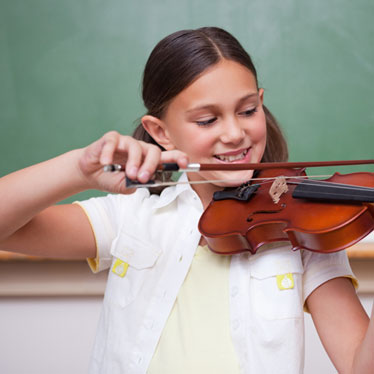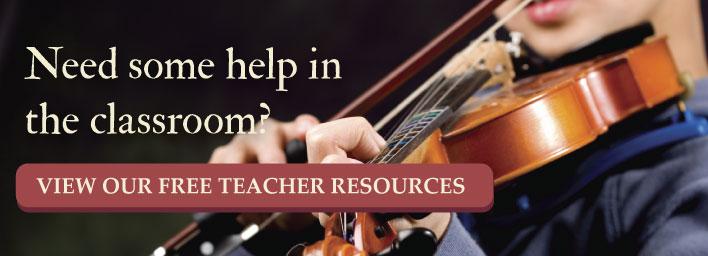How To Use Music Improvisation in the Classroom

Improvisation is an important musical concept for students to grasp as early as possible. In order to deliver a comprehensive music education, sight-reading, theory, history, and composition should be included within the general knowledge of how to play a specific instrument. However, just as important as those elements, improvisation is a fundamental concept that teaches students a variety of skills.
Music instructors who want to include improvisation in their lesson plans often find themselves at a stand. It can be difficult to know exactly where and how to start introducing the concept, and because your schedule is usually full, finding the time to research techniques can also be a problem. Since teaching improvisation helps students find connections between other musical elements like harmony, chord progression, structure, rhythm, and intonation, building it into your lesson plans increases your effectiveness as an educator.
Fortunately for students, improvisation techniques can be fun to learn. You just need to utilize the Circle of 5ths and apply some interesting games to your lessons in order to get your students excited about improvisation.

The Circle of Fifths is a powerful music tool that helps students in a variety of ways. You probably have it displayed somewhere in your classroom to make it easier for students to reference key signatures, or to learn chord progressions and harmony. However, it works very well with improvisation techniques because, although the letters in the circle are typically referencing chords, they can also designate a specific note of the scale, helping students grasp which notes go with what scale/chords.
To use the circle in this way, show your students how to find a major or minor scale with it. Essentially, they just have to remember the steps for each scale: whole, whole, half, whole, whole, whole, and half for a major scale; and whole, half, whole, whole, half, whole, whole for a minor. To jump a whole step, skip one letter on the circle to the right, to move a half step, go directly across the circle and move one letter to the right. For example, C, D, E, F, G, A, B, C. Although the problem with this method involves sharps and flats, it remains a great way to introduce the relationship of notes on the scale to your students, which is one of the fundamentals of improvisation.
A Note about Chords
Using the circle to help students understand music theory, as it relates to chord progression, is very effective. Since the primary triads form the movement in a number of music styles, just knowing three chords can introduce students to an effective personal composition.
Using Games
You can get your students interested in improvisation using these basic activities.
Call and Response:
This technique involves one person playing one bar of music. Start out with something very basic, such as one pitch played with a rhythmic variation. The other students repeat the measure, matching the dynamics and style as closely as possible.
You can alter this exercise by playing an incomplete phrase, and having another student complete it. However, make sure that each student who follows continues the call using the same number of beats in the measure.
Free Form:
In this exercise, give your students a specific scale to work with, say G. Designate that each student should play a certain series of notes on the scale, using whatever phrasing they’d like. Develop a method of cues so that every student will know when to play their specific series. Set a tempo and start by giving cues to students however you’d like. The idea here is to let the students hear how free form improvisation works and to allow their creativity to flow.
Repetition:
In this exercise, choose a melody that your students know and create variations in its structure. Ideas include:
- Repeating small sections of the melody over and over.
- Play a bar and then repeat it, altering the note order.
- Repeating the same measure but changing the note value each time.
- Take the small melody and transpose bars to create a new one.
Explore Emotions:
This improvisation technique helps students understand the value of playing from their heart. Have students think about which sounds and melodic structure reflect emotions. Have everyone agree on an emotion to convey and a single chord. Then have each student, in turn, play a series of notes (or a single one) that reflect that emotion. Have them pay attention to the note length and rhythm that pertains to the specific emotion you all want to convey.
Teaching improvisation isn’t about forming a structured learning technique. Since so much of it involves feeling and spontaneity, showing your students fun ways to explore with music can help them develop and incorporate their own personality into the music they play.


